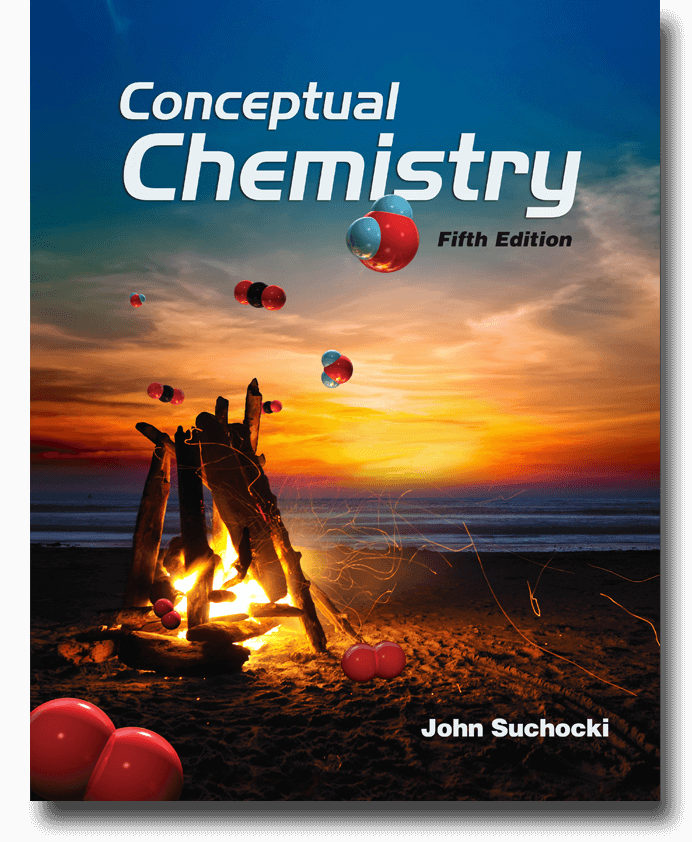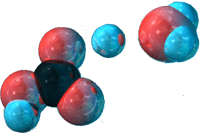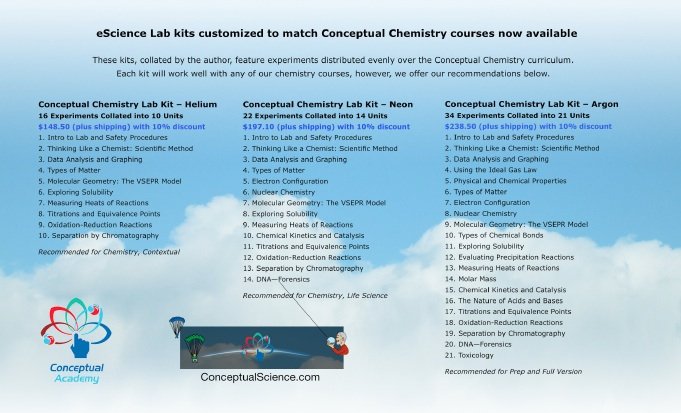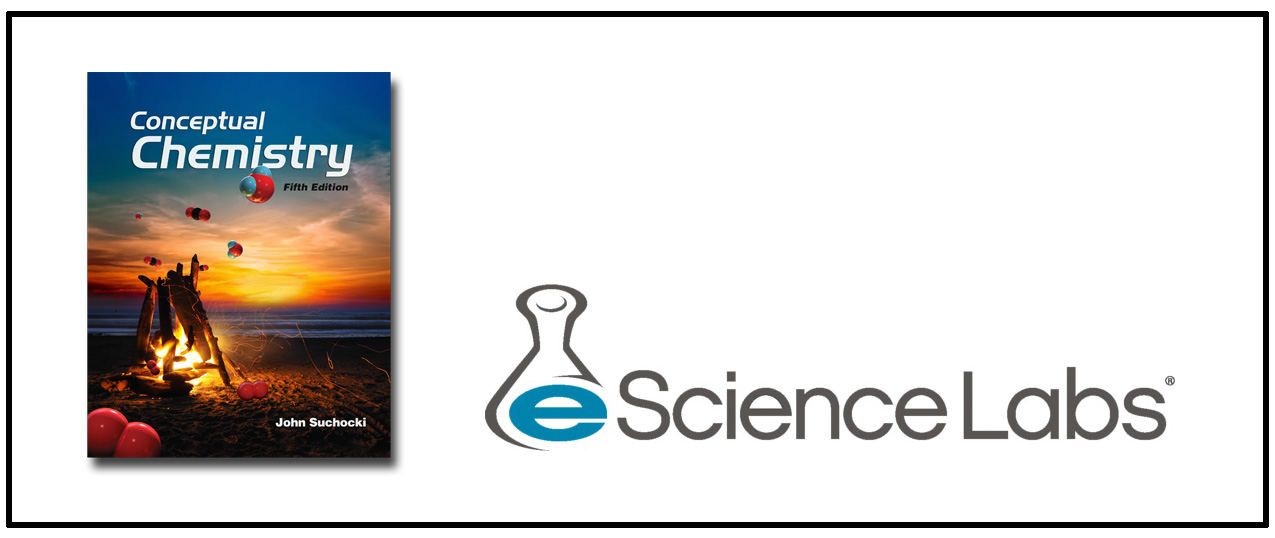
Labs
Each of our courses now features a full set of lab activities, which we have compiled from a number of sources. Notably, all these labs can be completed using materials found within a household or a local discount store. This is important as it allows you to assign labs for various “homework” assignments. Think about that. You’ve heard of the “flipped classroom” where students go home for lectures and come to class to study. Here we are providing you support for the “flipped laboratory” where students go home for their labs and come to class to . . . well, do even more labs and to follow up on the SAFE and affordable hands-on activities they did at home.
Briefly, here are the different sources of activities you will find available for your Conceptual Academy course:
1. The printed textbook itself contains numerous hands-on activities. These are found primarily at the back of each chapter. They tend to be short and sweet and you will find hundreds throughout the textbook.
2. We have embedded the popular PhET simulations from the University of Colorado into each of our courses. A PhET simulation allows the student to play with the parameters of a system (virtually) and to follow the results. Below is an example. We encourage you to play with the “Phase Changes” segment of this one simulation. Be careful because too many molecules and too much heat and pressure will cause the chamber to explode (virtually). 🙂 We also include worksheets that guide a student through select simulations.
3. Each of our textbooks comes with a dedicated lab manual containing hundreds of lab activities written and compiled by our Presidential Medal winning lab author: Dean Baird of Rio Americano High School. We highly recommend you take a look at these manuals, which you can obtain through our publisher Pearson. Or, just search online for Conceptual Physics Lab Manual. Many of Dean’s lab’s can also be performed safely without any special equipment.
For our chemistry courses, in addition to the above resources, we also have custom designed lab kits available from eScience Labs. Below is the detailed information you’ll need to move forward with these chemistry kits.
Thank you for joining us at Conceptual Academy.
— The Conceptual Academy Team
Conceptual Chemistry + eScience Lab Kits

 John has been working with the folks at eScience Labs to develop chemistry lab kits customized to the Conceptual Chemistry curriculum. The goal was to create a kit that would offer exciting hands-on experiences with key chemistry concepts for a reasonable price. Like a kid in a candy store, he picked his favorite 34 experiments, collated into 21 units. The price tag was pretty much up there. So, he tried again, painfully removing activities to come up with a healthy 22 experiments (14 units). This looked like a sweet spot. But to bring even more affordability, he narrowed it down to the most essential 16 experiments (10 units). Then he thought: Why not offer all three kits? Thus was born our Conceptual Chemistry/eScience Lab Kits with a special 10% discount for any ConceptualScience.com visitor.
John has been working with the folks at eScience Labs to develop chemistry lab kits customized to the Conceptual Chemistry curriculum. The goal was to create a kit that would offer exciting hands-on experiences with key chemistry concepts for a reasonable price. Like a kid in a candy store, he picked his favorite 34 experiments, collated into 21 units. The price tag was pretty much up there. So, he tried again, painfully removing activities to come up with a healthy 22 experiments (14 units). This looked like a sweet spot. But to bring even more affordability, he narrowed it down to the most essential 16 experiments (10 units). Then he thought: Why not offer all three kits? Thus was born our Conceptual Chemistry/eScience Lab Kits with a special 10% discount for any ConceptualScience.com visitor.
Not to lose out on a teaching opportunity, John named these kits: Helium, Neon, and Argon. Helium, of course, is the lightest noble gas. Neon is the brightest (when electrified). Argon is the most abundant—indeed, our atmosphere is about 1% argon, which is much more abundant than either neon or helium (which tend to float upward into outer space).
PLEASE NOTE: A single kit can be shared by a team of up to 4 students. To order the kits, you will first need to create an account with eScienceLabs. You will then go to their “Have a code?” page where you can use any of these codes:
- Helium, 16 experiments, 10 units, $148.50 + shipping: Product Code: Kit4512
- Neon, 22 experiments, 14 units, $197.10 + shipping: Product Code: Kit4511
- Argon, 34 experiments, 21 units, $238.50 + shipping: Product Code: Kit4510
You’ll clearly want more information about these kits. To start, click on the following image to see it as a high resolution .pdf file. Scroll down further and you’ll see a link for a .pdf collating the full suite of labs (Argon) to the Conceptual Chemistry chapters. And, of course, be sure to explore the eScience Labs website for more information and samples.
Click the above image for a magnified view of this flyer showing the three chemistry lab kits. Click the below image for a .pdf showing how these labs integrate into the Conceptual Chemistry table of contents. You’ll need this document to help you gauge when to implement which labs when as you progress through the course. Again, click the following image:



